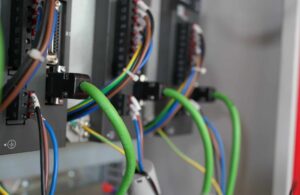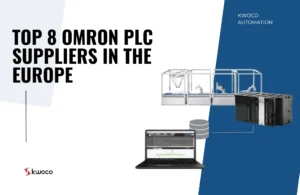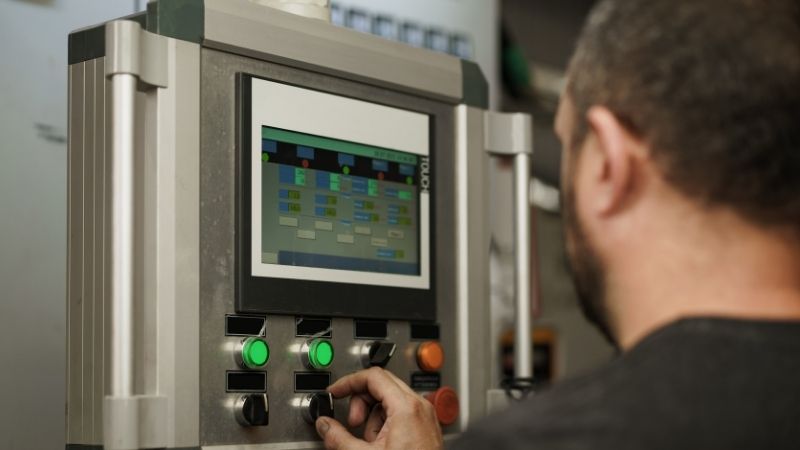How Does a PLC Control a Solenoid Valve?
Fortunately, using a Programmable Logic Controller (PLC) can streamline this process, providing precision and efficiency.
As an engineer at Kwoco, I’ve seen firsthand how PLCs simplify automation tasks. By connecting a PLC to a solenoid valve, we can automate operations that would otherwise require manual intervention. This not only saves time but also enhances safety in potentially hazardous environments.
Table of Contents
What is a Solenoid Valve?
A solenoid valve is an electromechanical device that controls the flow of liquids and gases. It consists of two main parts: a solenoid coil and a valve body. Depending on the design, a solenoid valve can be normally open (NO) or normally closed (NC). This means that it either allows or blocks fluid flow without requiring constant manual adjustments.
When the solenoid coil is energized, it creates a magnetic field that moves the plunger within the valve body. This action either opens or closes the valve, controlling the flow of the media. Understanding this mechanism is essential for any engineer working in fluid control systems.
What Factors Should You Consider When Choosing a Solenoid Valve?
When it comes to selecting a solenoid valve, you might feel overwhelmed by the options available. Choosing the right valve is crucial, as the wrong selection can lead to operational inefficiencies and increased costs. Understanding what to look for can simplify this process.
To put it simply, here are the key factors to consider:
- Type of Solenoid Valve: Consider whether you need a two-way, three-way, or four-way valve. This depends on your application and the desired flow control.
- Operating Pressure and Temperature: Ensure the valve can handle the pressure and temperature conditions of your system. Exceeding these limits can lead to valve failure or unsafe operations.
- Media Compatibility: Verify that the valve material is compatible with the fluids or gases it will control. Avoiding chemical reactions that could damage the valve is essential.
- Voltage Requirements: Determine whether you need an AC or DC valve, and check the required voltage for operation. This can affect installation and integration with your existing systems.
- Response Time: For applications requiring quick actuation, consider the valve’s response time. This can impact the overall efficiency of your system.
- Size and Flow Rate: The valve size should match your piping system, and its flow rate must meet your application’s requirements. Improperly sized valves can reduce efficiency or increase wear.
- Quality and Reliability: Choose valves from reputable manufacturers known for quality. Quality impacts maintenance costs and operational reliability.
- Cost vs. Value: While budget constraints are important, consider the overall value a valve offers in terms of performance and longevity. Investing in quality products can lead to long-term savings.
By keeping these factors in mind, you can make an informed decision that enhances your project’s success.
How PLCs Work with Solenoid Valves
Solenoid valves are vital in almost every fluid control system. They automate the flow of liquids and gases, saving time and reducing the risk of human error. For precise control, using a PLC to manage a solenoid valve is a smart choice.
When a PLC outputs a voltage, it energizes the solenoid, allowing fluid to flow. Conversely, cutting the voltage deactivates the solenoid, stopping the flow. This simple yet effective control mechanism is key in various industrial applications.
Understanding how to connect a PLC to a solenoid valve can greatly enhance your system’s performance. The output module of the PLC connects directly to the solenoid valve’s coil. When the appropriate output point receives voltage, the solenoid coil activates, engaging the valve.
For installations requiring high currents, such as 24V solenoids, use external power supplies and intermediary relays to manage load safely. This ensures your PLC remains protected and operational even during short circuits.
Power your projects with brand-new, original Omron, Mitsubishi, Schneider PLC – in stock, ready now!
Conclusion
Controlling a solenoid valve with a PLC is an efficient way to automate fluid control systems. By understanding the principles of operation, you can enhance your project outcomes and ensure safety and reliability.
Looking for new, original PLCs for your projects? At Kwoco, we stock the latest PLCs from top brands like Omron, Mitsubishi, and Schneider. Shop with confidence—fast shipping, guaranteed quality! Buy Now.
Contact Us
Just fill out your name, email address, and a brief description of your inquiry in this form. We will contact you within 24 hours.
You May Also Find These Topics Interesting

How Do PLCs Communicate with Each Other?
In today’s swiftly advancing intelligent production setting, dependable interaction in between PLCs (Programmable Logic Controllers) is basic to making sure security, versatility, and performance in automation systems.

What is the Difference Between PLC and CNC?
Have you ever been puzzled by the terms PLC and CNC in the world of industrial automation? You’re not alone. Many professionals face challenges distinguishing these two crucial systems, especially when making purchasing decisions.

Top 8 Omron PLC Suppliers in the Europe
Top 8 Omron PLC Suppliers in The Europe With over a decade of experience in the industrial automation industry, we’ve





